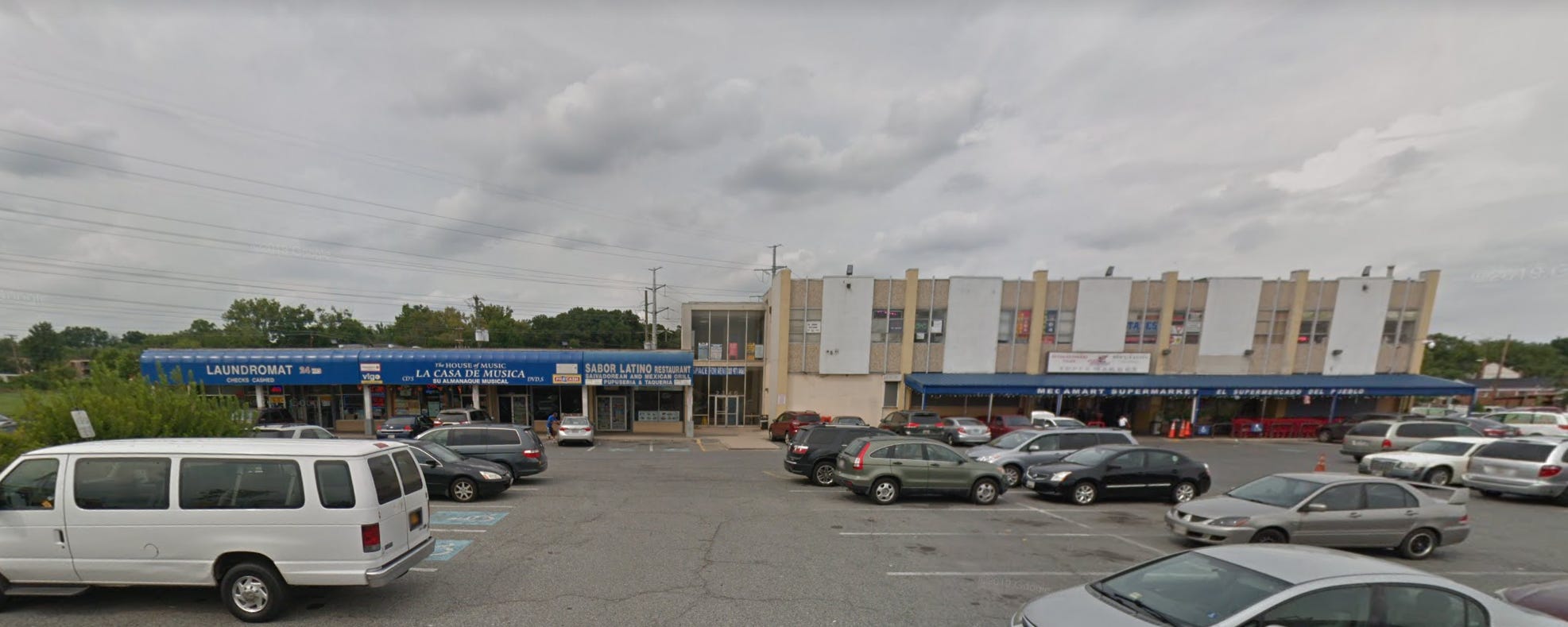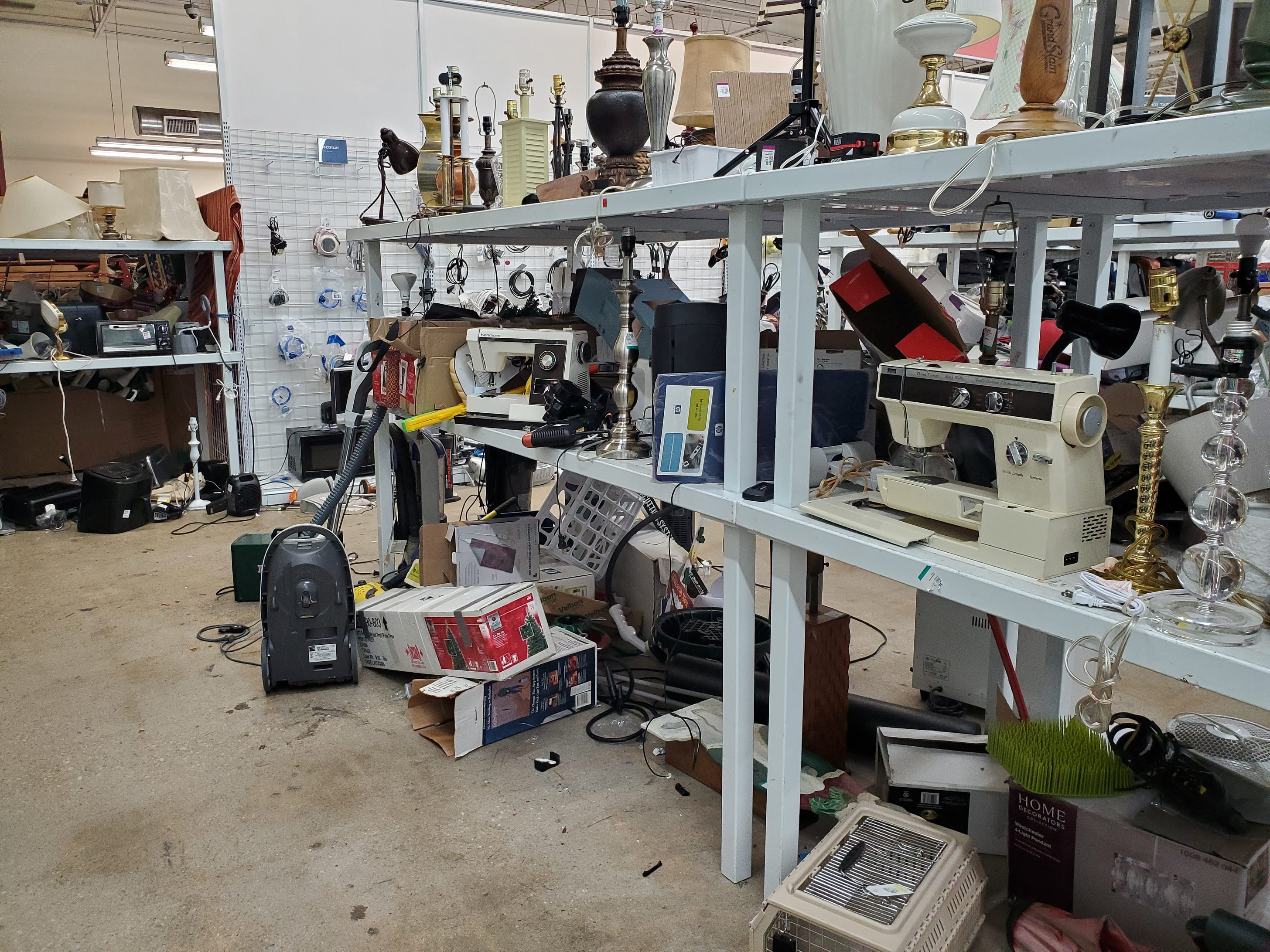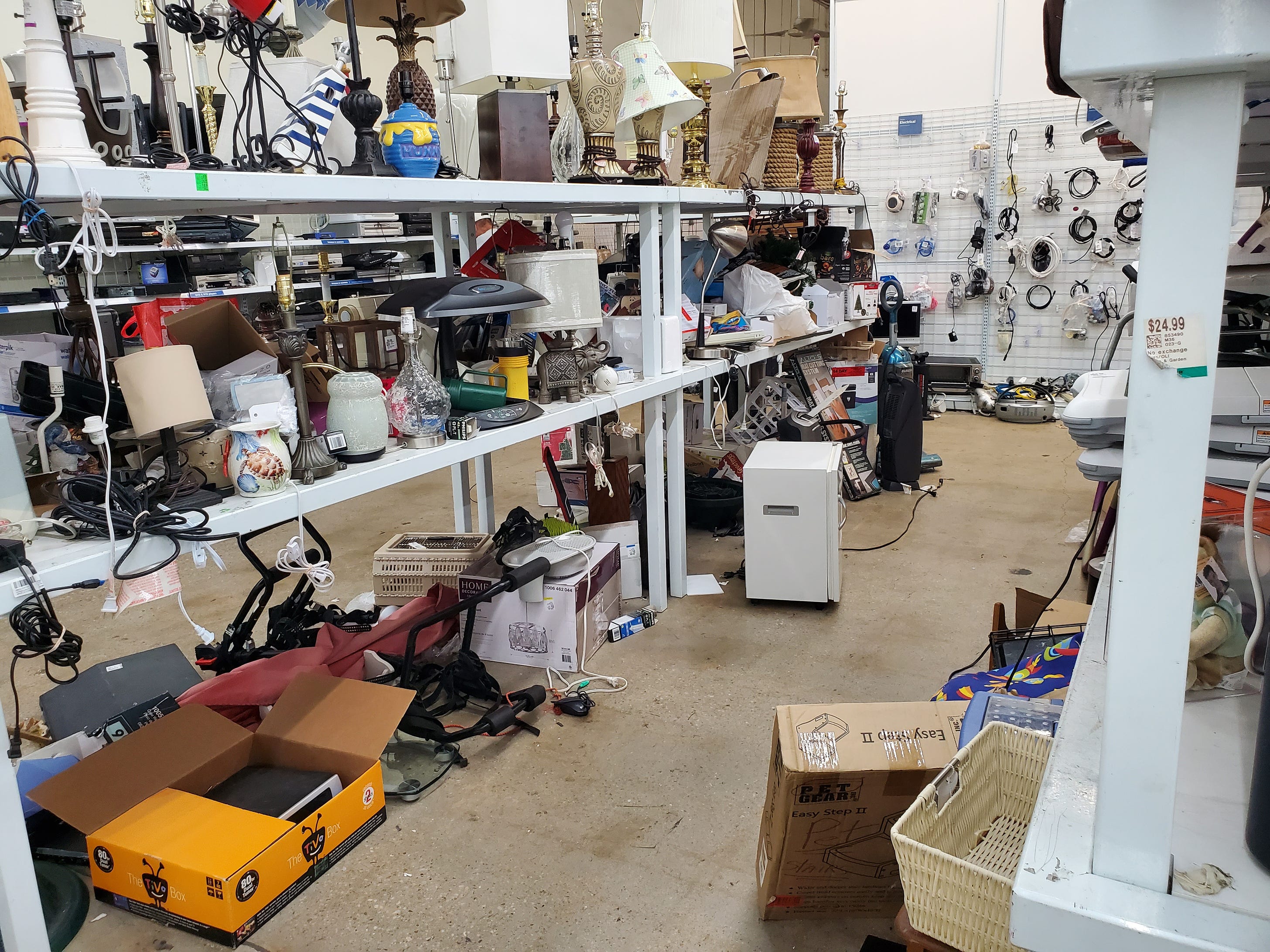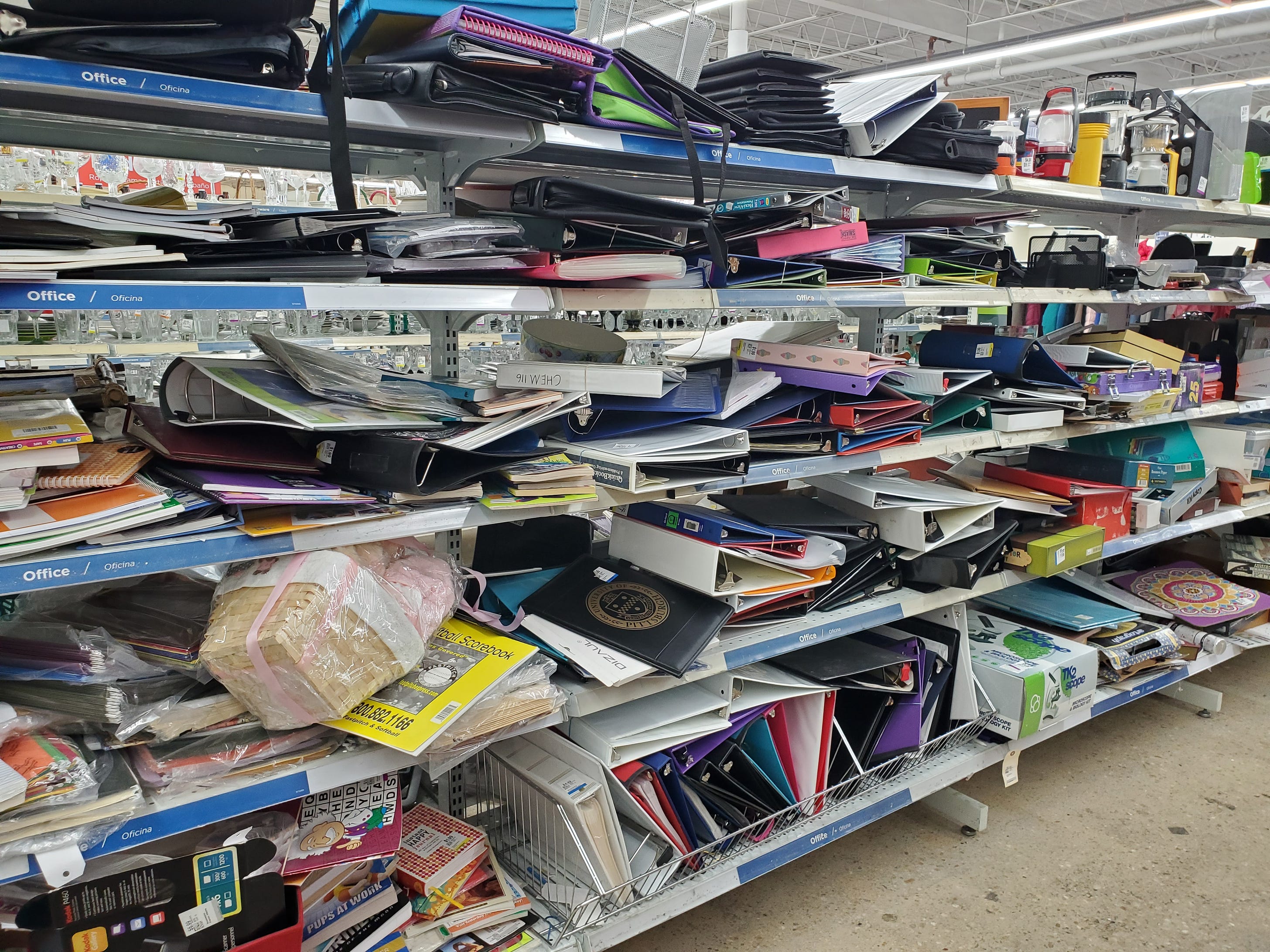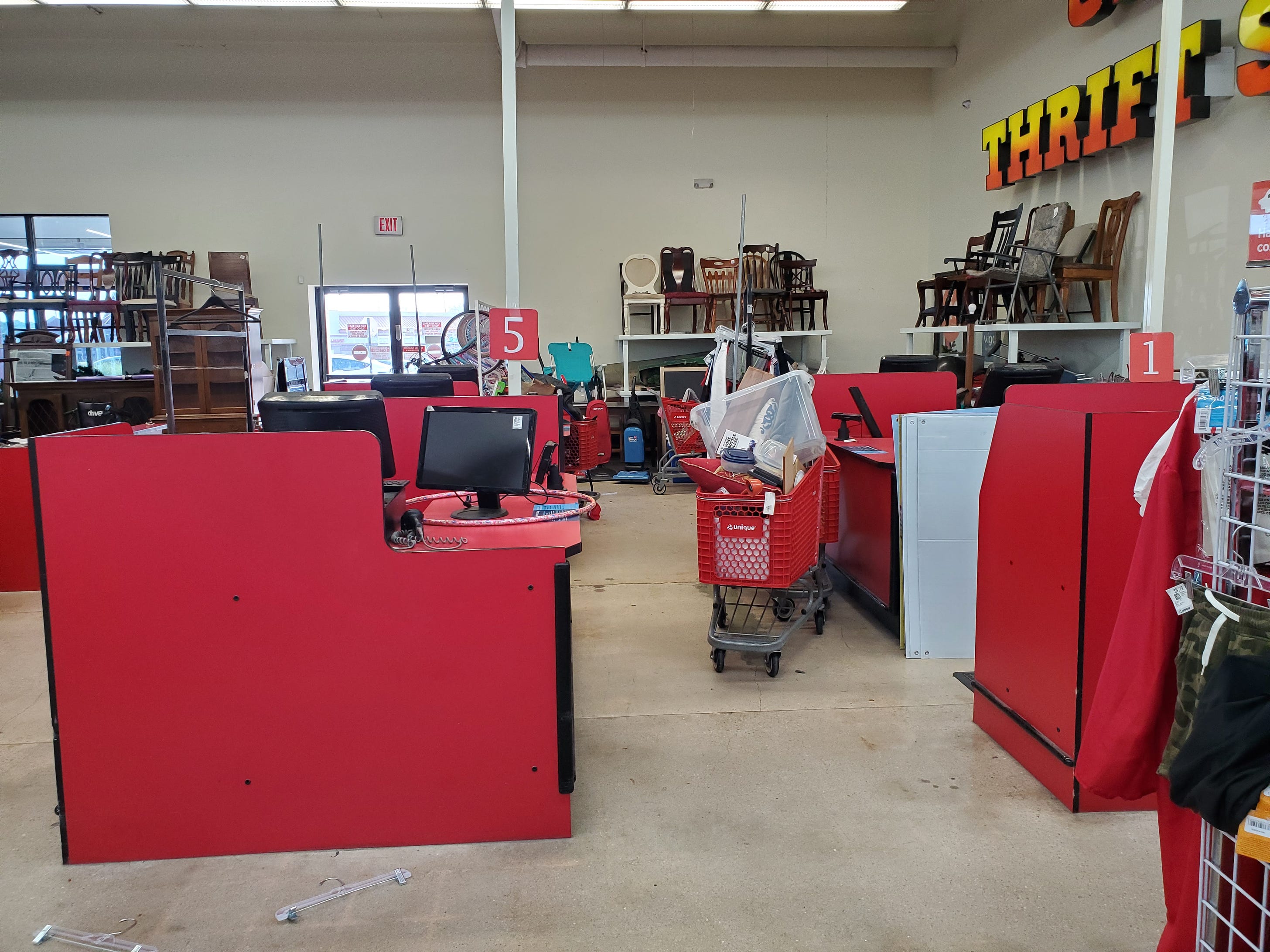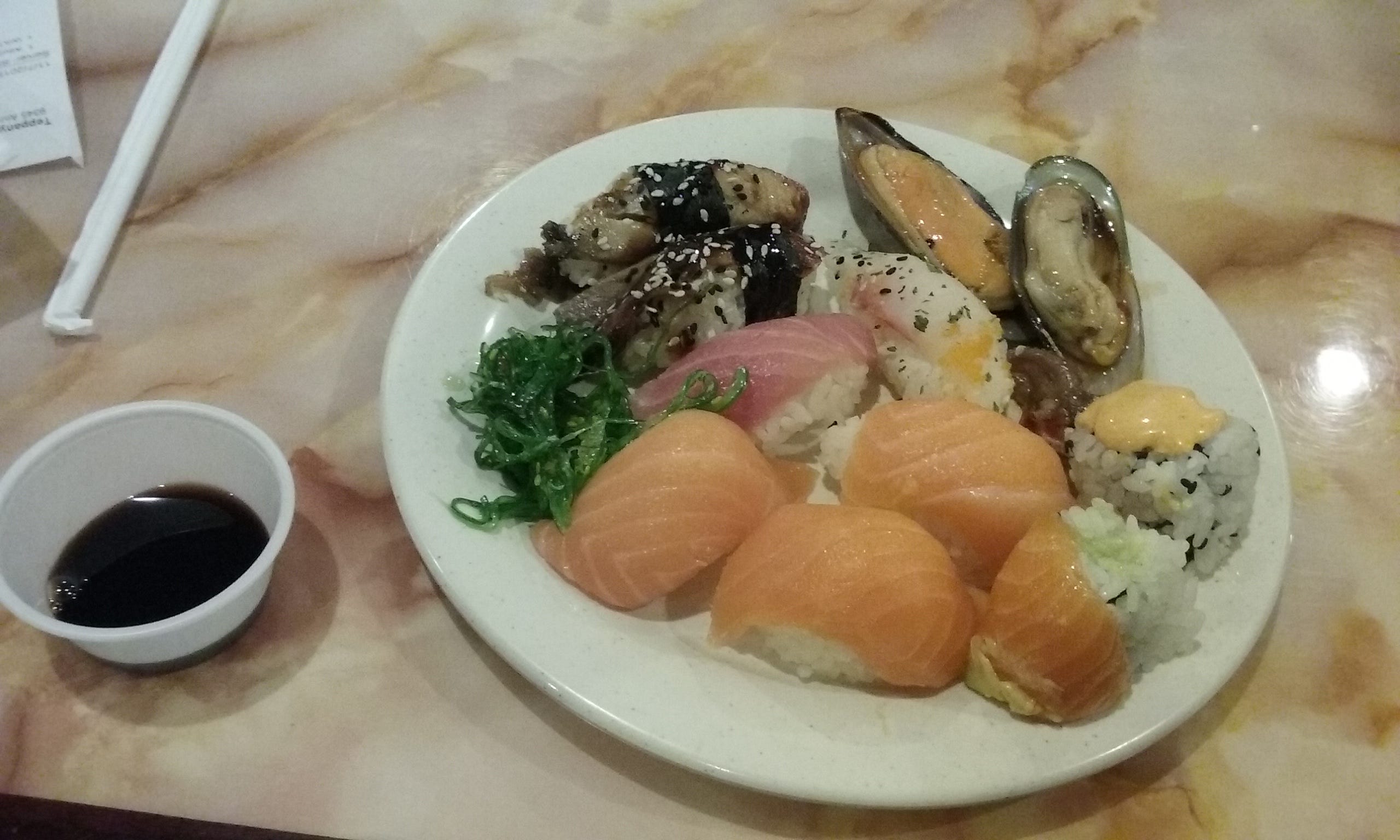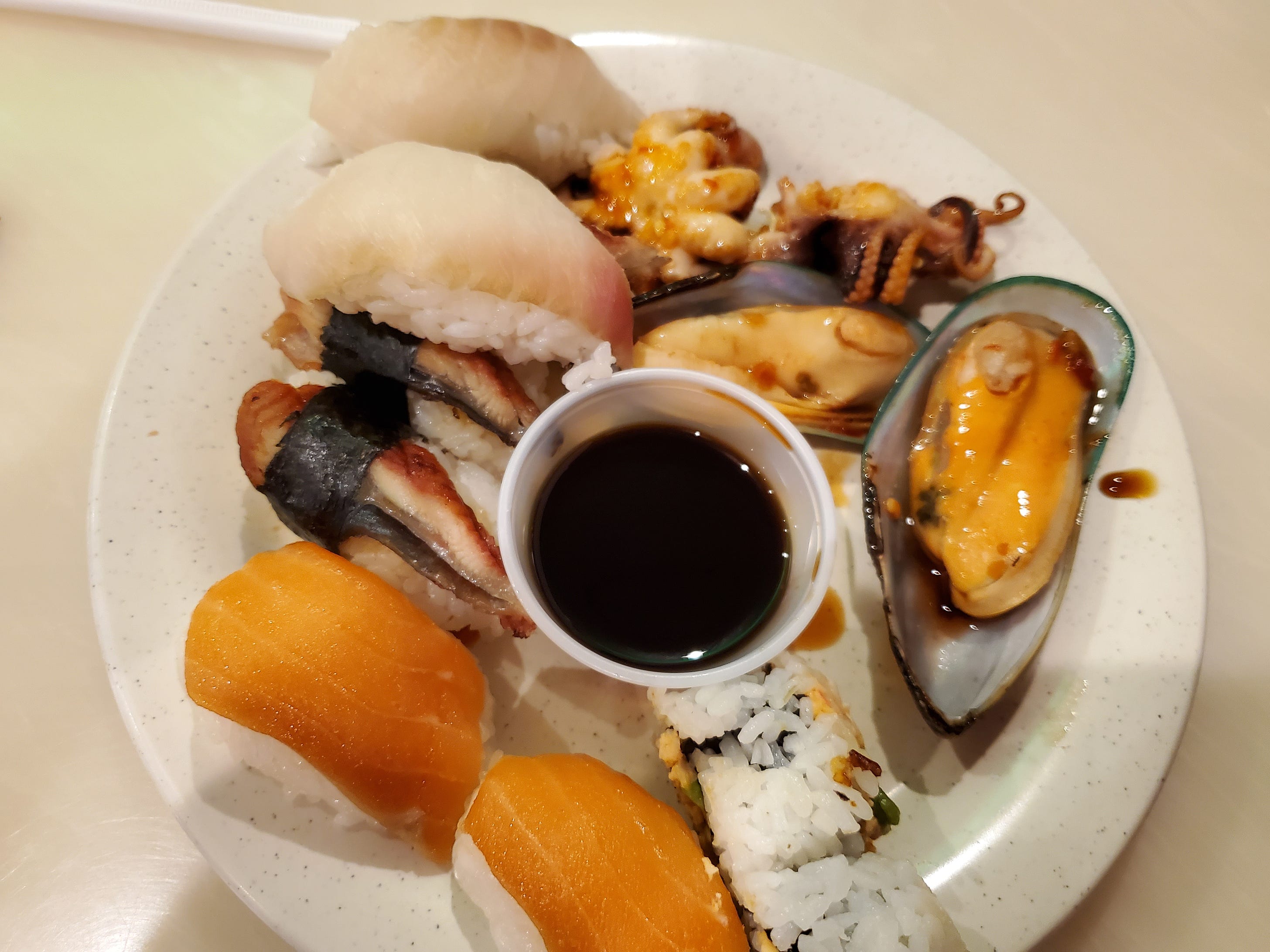The Deleted Scenes - Stress Cracks
I spent a day recently driving around Prince George’s County, in Maryland. I met a friend I made through the University of Maryland’s mentor program, who wrapped up her public policy degree last May, just as I did several years ago. We had a final meet-up before she flies back to her home country for a job she’s already started remotely. (I was employed pretty quickly upon graduation too; the UMD School of Public Policy is pretty good, you know.) We met at a little coffee shop in front of my old student apartment building; turns out I wrote about the coffee shop in this newsletter once! Then I hit a few thrift stores—the same ones I used to visit on slow school days—except the one that was demolished a few years ago. And I wrapped up by having dinner at a Chinese buffet in Lanham. Back when I lived in College Park and it was only a 12-minute drive on the Beltway—though I kind of preferred the longer drive through neighborhoods and old commercial strips—it was my favorite buffet. It was in the first year of my master’s program that I started doing this. It was the first year I owned a car and lived far from my parents, too. At that age, for everything to be new or for the first time, it all really made an impression on me. To this day, as you can see, I occasionally spend a day out here, not reliving my grad school days per se, but reminding myself that I’m not old, and enjoying those memories again. It isn’t dating or socializing or classes I miss as much as that feeling of effortlessly leaving the apartment and going anywhere I wanted, most of it within a 10-15 minute drive. It’s a funny thing; going back to my little college town in New Jersey doesn’t spark any of this. My college friends and I all feel that we enjoyed that time, but we’re glad it’s over and don’t miss it. Grad school, when we had the security of school but the freedom of genuinely being adults? I think we sort of miss that. But anyway. Over the years, these little trips—interrupted, of course, by the pandemic—have become a little less similar to the original ones. I no longer feel like I’m doing it; I feel like I’m reenacting it. Or trying to. These communities I drive through, some of the poorer suburban places that were mostly built out in the 1950s and 1960s, always looked a bit distressed and timeworn. But that impression, vaguely, has gotten worse. I did a segment on this in Friday’s “New and Old” link roundup, inspired by a Twitter acquaintance’s blog post (in turn partly inspired by a conversation we had). It was all about what I think of not as “inflation” (too technical) nor as “collapse” (too dramatic) but rather as deterioration: the slight and subtle but real worsening of things. I had a lot of those feelings driving around PG County. It’s interesting, because as a white rural-exurban guy from central Jersey, PG was a little bit of a change of pace back in 2015. And yet very quickly, I got used to the higher densities, higher traffic, much higher population of black and Hispanic people than my hometown. None of it ever bothered me, and I liked and still like driving around, shopping, trying little hole-in-the-wall restaurants in aging strip plazas, writing about old buildings. Heck, I notice the preponderance of white folks in my hometown now more than I notice the inverse down here. Which is to be clear that when I say things have deteriorated, I don’t mean, as some people might mean and some people might assume, “the buildings are old” or “there are a lot of black people.” And frankly, I feel this sense of deterioration in the much more affluent Virginia side too. That’s not to say there isn’t poverty or something approaching it. I was a little surprised, back in 2015, how a county that, after all, is far from being “poor” objectively, was so full of small un-expanded houses and commercial buildings from the original suburban buildout in the 1950s and 1960s. There has been some modern infill, mostly residential, in some areas, and the Purple Line light rail, which runs through several of these distressed-looking commercial corridors, may spark redevelopment. But for now, not much has changed. So relative poverty—compared to what I was used to, that is—was as visible then as now. Here, for example, are a few of the sort of strip plazas I’m talking about. You can tell these are very early ones because of their minimal street-style parking, narrow or non-existent setbacks, and classic storefront design (doors set in or at angles, like on Main Street). They’re the earliest iteration of the form, essentially an urban shopping block shorn of its additional floors (in two cases) and transposed onto a highway. For many people, this aesthetic is utterly normal. For me, coming from central Jersey, it was surprisingly neglected-looking. Or, really, just old. These buildings haven’t deteriorated, except in the sense that they haven’t been renovated in eight years. Or sixty years. This is just to give you a picture of the landscape I’m talking about, if you’re not local to the area. And again: I kind of like this. I don’t see people causing decay, but rather people without a whole lot doing what they can with what they have. Most of these aging storefronts are leased, and are home to small businesses. The alternative here wasn’t that these places would be immaculately maintained middle-class suburbs forever. The logic of suburbia militates against that. The decline is baked in; the people living here and doing business here are ensuring that that decline does not also mean abandonment. So first of all, the coffee shop. The place was clean, and it’s a great student hangout space and a neat remnant of U.S. 1’s old roadside landscape. But I spent over $6 for a small vanilla latte that was significantly inferior to the drip coffee my dad makes from Costco dark roast, with a little heavy cream from Aldi and some vanilla syrup from a restaurant wholesale store. I’m not sure what that tells you. One of the toilets was loose, as in not properly bolted to the floor (subfloor, really). These are the sorts of things I either notice more now, or that are just more frequent: small little annoying defects or broken things or issues that just never seem to get resolved. Who knows where the fault lies: junky builder-grade fixtures, installers cutting corners, customers being rougher with things, managers not bothering with non-essential maintenance. Some of this is tied up with the COVID experience, some not. But you see it in many places. In Walmart, for example, which feels messier than before. I’ve seen Walmarts that just look and feel ransacked, more like a thrift store than a massive chain that dominates retail and is known for its innovation. I guess the labor crunch is the source of a lot of this. In a sort of analogous way to how gas prices amplify the feeling of inflation, restaurants and retail stores amplify the perception of a labor shortage; we see them every day. I’ve had this weird experience recently of feeling like the veil was drawn, where it becomes very obvious that the employees in these stores are just ordinary people who don’t have great managers and just do what they can, or can’t. Recently, the employees in Lowe’s will just look an item up on their phone for the location if you ask where something is. (If my phone signal came in well in my local Lowe’s, which for some reason it doesn’t, I could look it up too.) I had a guy there tell me he’d “have to call someone” to find something, and then go back to his work and not call anyone. But I assume these employees are minimally trained and minimally paid, and in some cases just literally don’t have the time to do the full job. Restaurants, now inundated with online orders and in-person dining, feel more bare and transactional. The notion that there is hospitality involved has been attenuated. A well-run, fully staffed operation creates a kind of magic. Things just work. But everywhere you see or sense these stress cracks—this deterioration. But speaking of thrift stores, here’s what has been for a long time my favorite thrift store. In all the years and many dozens of visits here, I have never, ever seen this store so messy. It looked like a hoarder’s basement. More stuff than usual was missing price tags (free?). It felt like there were fewer staff. When the thrift store is messy like this, you sort of think about shoplifting. Partly, I could probably get away with it, but also, why should I care more about this junk than you do? It’s a good thing, maybe, that there was nothing worth stealing in there. It makes me think of “broken windows,” the controversial law-enforcement theory. But that’s an analogy drawing on the built environment, where, the argument goes, dereliction or minor vandalism begets more, and worse, of those things. The analogy drawn, in regard to policing, is that low-level law-breaking leads to more severe law-breaking, and that “fixing the broken windows”—i.e. arresting fare evaders or otherwise cracking down on minor offenses—will sort of bubble up and nip serious crime in the bud. Whatever you think about that, I like the original idea! In other words, broken windows, but for windows. Actually neaten up the store, fix the minor issues, present a sense of care. And one reason I think this logic is sound is that I can see it in myself. Like there, where the disarray of the thrift store makes shoplifting feel almost okay. Or at the coffee shop where I sit and work—where the staff are friendly, the customers are considerate, the place is clean and tidy—I’ll pick up a stray paper towel on the floor, push in the chair or scoot the table back against the wall, change the toilet paper (which is kept in a container in the bathroom). Kindness begets kindness; order begets order. Kindness and order aren’t contradictory. But these “stress cracks” aren’t a result of giving up. It all has just, as far as I can tell as a customer, gotten harder. And then the buffet. First, on my way, I saw a lot more of the informal food stands you sometimes see around here—coconut vendors with machetes, trucks selling drinks or pupusas or tacos, fruit salad vendors at tables under tents. Maybe it’s just because it was a hot day, or maybe things are really tighter and more people are turning to unlicensed but honest entrepreneurship than before. None of this technically allowed, whether outside houses or in strip-mall parking lots. Backing up the idea that people are struggling, though, was the fact that several of the stores or strip plazas I visited had a homeless person outside one of the doors. That’s new. As is a sign I saw along the highway:
Never seen that before. It’s tough out there. Now I’ve written more than enough words about buffets, and I’ve probably had this experience enough times by now. I wrote, back in 2022:
That was a place in Virginia. The one I visited on this recent visit was in Maryland, and had always been excellent. But I had the same experience this time. Up till now, even in several post-pandemic visits, it had remained better than the other places. And it probably still is. But for the first time, I had a disappointing and sort of dispiriting dinner. This thing that had always been there wasn’t anymore, and might never be again. Maybe it’s the sense of growing up that’s unnerving, or the feeling that reliving this old routine is closed off to me now. Here’s a plate of this buffet’s sushi, back in 2015, when dinner was $11.95. The attention to detail—the black sesame seeds, the drizzles, four types of nigiri—always felt a little above and beyond. This place was great. Everything felt clean and fresh every time. Here’s a post-pandemic plate: The tuna was gone then; the eel is gone now. The drizzles and garnishes are gone. By 7pm, when the place would previously have still been hopping, the sushi guy was already consolidating plates, leaving half the bar empty, with the salmon and tilapia combined onto one platter. Both looked and tasted old. The rice on the California rolls crumbled, like they had been saved overnight. It felt symbolic. Like we’ve all grown older—turning in earlier, throwing in the towel on things where previously we’d have rolled up our sleeves. The other highlight here—the made-to-order teppanyaki grill—was better. But the egg noodles I always go for were visibly dry on top, and a lot of them were clumped up or broken apart. Old, literally picked over, like a bare shelf. The people were nice; the grill cook gave me a thumbs-up when my plate was ready, the waiter was friendly and apologized when he accidentally cleared my place setting (I was waiting for grill cook to come back from the men’s room and the waiter thought I’d left!). The manager was making rounds and observing the place. But it just wasn’t the same. Do I chalk it up to the first off day in eight years, or just give this up already? We see patterns; maybe I’m just doing that here. But I’m quite sure that while the Venn diagram or distribution of experiences pre- and post-pandemic overlap somewhat, they are identifiable as different experiences or periods. And if this piece is a little bit jumbled and strung together, that’s because, maybe, that’s what the pandemic and post-pandemic periods themselves feel like. Here’s something I think about. There are young kids for whom the pandemic held back school and may have damaged their learning and social development; there are parents whose lives were rendered relentlessly busy by at-home schooling and remote work. Those are worse impacts than anything my wife and I suffered. Yet I think we’re a category too: young people, mid-to-late 20-somethings whose final school-adjacent, carefree years were cut short. I was 26 when the pandemic began; I’m 30 now. What began as a sharp crisis ended up being a long semi-crisis, and now a lingering period of…something. I’ve been incredibly lucky. We bought a house, I became successfully self-employed, we adopted another cat, I got really good at cooking, we’re starting to think about kids. Yet for all those blessings, I still wish I’d had a couple more years of continuity with the version of myself who, in early 2020, had graduated from the UMD School of Public Policy only three years ago, was working remotely already, and had just begun to spend some days on the road, ending of course with a Chinese buffet, mixing old school nights and a then-new idea of writing pieces like this about places and landscapes in the D.C. area. In my memory, 2020 is a sharp break, a dividing line. Everything after that March, up to even today, is enveloped in a certain haziness. There’s a clarity of mind that’s missing. It’s strange to fully grow up, to exit your twenties, amid all of this. And road-tripping around my old haunts doesn’t dispel all of this as much as confirm it. So maybe it’s not you, it’s me. Or maybe it’s all of us. Because, after all, and for better or worse, we’re all in this together. Related Reading: Not-Pennsylvania Amish Country Thank you for reading! Please consider upgrading to a paid subscription to help support this newsletter. You’ll get a weekly subscribers-only post, plus full access to the archive: over 700 posts and growing. And you’ll help ensure more material like this! You're currently a free subscriber to The Deleted Scenes. For the full experience, upgrade your subscription. |
Older messages
The Seafood Boil And The Buffet
Saturday, September 23, 2023
The reversal of a pandemic-era restaurant trend?
New and Old #128
Friday, September 22, 2023
Friday roundup and commentary
The Country's Best Season
Thursday, September 21, 2023
Some thoughts on American regionalism and diversity
Flemington Roundup
Wednesday, September 20, 2023
What Do You Think You're Looking At? #128
Set In Brick
Tuesday, September 19, 2023
Is quality elitist?
You Might Also Like
Mastering Circumstance
Tuesday, March 11, 2025
“If a man does not master his circumstances then he is bound to be mastered by them.” ͏ ͏ ͏ ͏ ͏ ͏ ͏ ͏ ͏ ͏ ͏ ͏ ͏ ͏ ͏ ͏ ͏ ͏ ͏ ͏ ͏ ͏ ͏ ͏ ͏ ͏ ͏ ͏ ͏ ͏ ͏ ͏ ͏ ͏ ͏ ͏ ͏ ͏ ͏ ͏ ͏ ͏ ͏ ͏ ͏ ͏ ͏ ͏ ͏ ͏ ͏ ͏ ͏ ͏ ͏ ͏ ͏ ͏
Don't Fall for This Parking Fee Scam Text 🚨
Tuesday, March 11, 2025
How I Use the 'One in, One Out' Method for My Finances. You're not facing any fines. Not displaying correctly? View this newsletter online. TODAY'S FEATURED STORY Don't Fall for the
Ollie Ollie Oxen Cheap
Tuesday, March 11, 2025
One of the last true "closeout" stores is a fun place to look closely ͏ ͏ ͏ ͏ ͏ ͏ ͏ ͏ ͏ ͏ ͏ ͏ ͏ ͏ ͏ ͏ ͏ ͏ ͏ ͏ ͏ ͏ ͏ ͏ ͏ ͏ ͏ ͏ ͏ ͏ ͏ ͏ ͏ ͏ ͏ ͏ ͏ ͏ ͏ ͏ ͏ ͏ ͏ ͏ ͏ ͏ ͏ ͏ ͏ ͏ ͏ ͏ ͏ ͏ ͏ ͏ ͏ ͏ ͏ ͏ ͏
“Olympus” by Matthew Olzmann
Tuesday, March 11, 2025
I was a cobbler in the house of the Gods. ͏ ͏ ͏ ͏ ͏ ͏ ͏ ͏ ͏ ͏ ͏ ͏ ͏ ͏ ͏ ͏ ͏ ͏ ͏ ͏ ͏ ͏ ͏ ͏ ͏ ͏ ͏ ͏ ͏ ͏ ͏ ͏ ͏ ͏ ͏ ͏ ͏ ͏ ͏ ͏
Harry has us blushing
Tuesday, March 11, 2025
— Check out what we Skimm'd for you today March 11, 2025 Subscribe Read in browser Header Image But first: Join the waitlist for a new premium Skimm experience Update location or View forecast
Fancy Flats Are Spring's #1 Shoe Trend & We're Obsessed
Tuesday, March 11, 2025
Give your heels a break. The Zoe Report Daily The Zoe Report 3.10.2025 There is so much to celebrate this week — and month, for that matter. There's Paris Fashion Week, which is well underway and
Dads, You Can Get in the Best Shape of Your Life With This Workout Program
Monday, March 10, 2025
View in Browser Men's Health SHOP MVP EXCLUSIVES SUBSCRIBE Dads, You Can Get in the Best Shape of Your Life With This Workout Program Dads, You Can Get in the Best Shape of Your Life With This
Meghann Fahy’s Master Plan
Monday, March 10, 2025
Today in style, self, culture, and power. The Cut March 10, 2025 CUT COVERS Meghann Fahy's Master Plan After breaking out on TV, Fahy stars in a big-screen thriller this April. She won't
EmRata Flaunted Pelvic Bone Cleavage, Aka "Pelvage," In The Tiniest Skirt
Monday, March 10, 2025
Plus, your love life this week, your daily horoscope, and more. Mar. 10, 2025 Bustle Daily Chet Hanks EXCLUSIVE Chet Hanks Has The Last Laugh It's easy to make assumptions about Chet Hanks, namely
The 20 best cookbooks of spring
Monday, March 10, 2025
NYC steakhouse sues Texas over attempted “Texts Strip” rebranding.


